A flower bed filled with masses of color to grab your attention, blooming from spring through fall — what could be better in any garden? If what you want is a flower bed filled with masses of the same plant, such as a bed of impatiens or roses, it’s easy to get it right. But if you hope to have a judicious mix of colors and shapes and flowers that will fill the space throughout the growing season, you’ll need to take some time to plan ahead and follow some basic design guidelines.
The latter part of the summer is a good time to look at your flowering beds and borders and see what is and isn’t working, especially as the plants mature, and think about the changes you might want to make. You also still have some time to tweak what’s there, adding in some late-summer and fall-blooming annuals and perennials. You can also search nurseries and garden centers for perennials to plant this fall to give them a head start for next year.
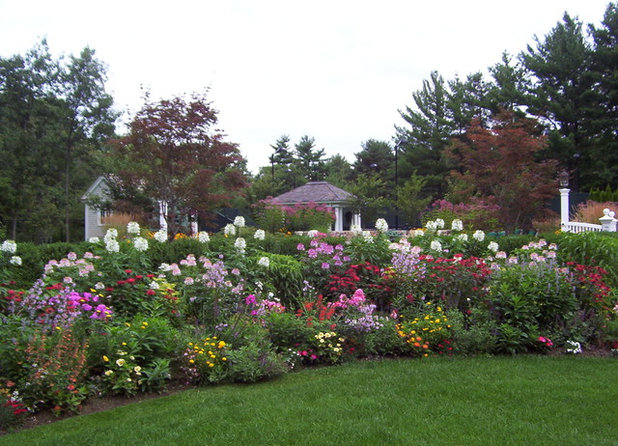
NatureWorks Landscape Services, Inc.
Choose a spot. Some spots are classic choices for a flower bed, such as along the foundation of your home, nestled against a side or back fence to mark the yard’s border, or at the edge of a sidewalk or path. They may be expected locations, but they remain at the top of the location list because flower beds serve as beautiful transition areas between the home or hardscape and the main garden areas, so they can be enjoyed often and up close.
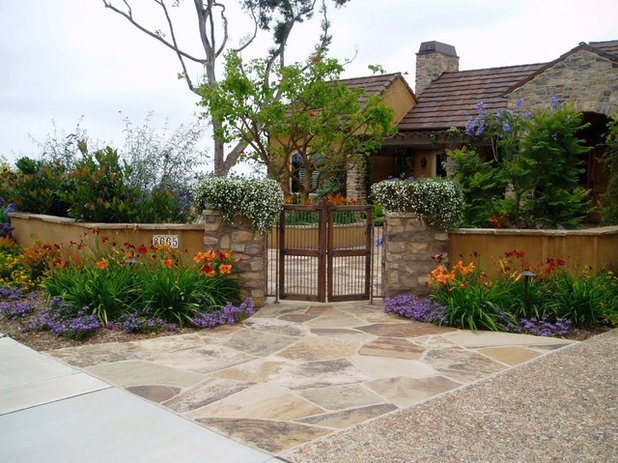
The Design Build Company
Keep other options in mind as well. You might want to expand a traditional bed as it turns a corner of the house to increase your planting space. Don’t overlook placing a flowering bed in a less likely areas, such as outside a front-yard fence, along a driveway, flanking one side of a swimming pool or filling in a berm or terraced hillside.
4 Gorgeous Garden Looks for a Narrow Planting Strip
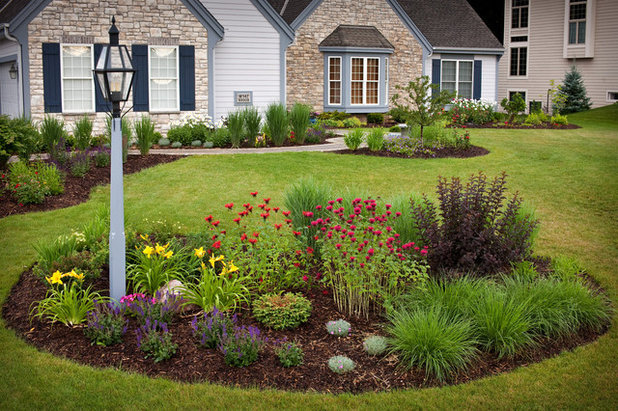
Ginkgo Leaf Studio
A more dramatic option is to create an island of color in the middle of the lawn. It breaks up a wide expanse with a colorful focal point. And if you choose plants that are less thirsty than turfgrass, you may be able to save a little water too.
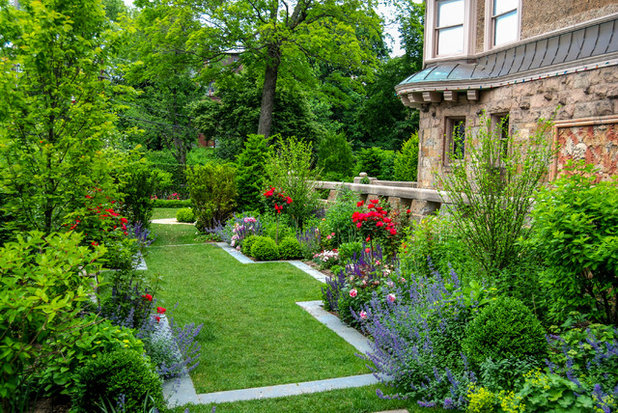
a Blade of Grass
Decide on a shape. There is no right or wrong; it all depends on your personal preferences. But there are some things to think about. Hard-edged square and rectangular garden beds, for example, work particularly well with both very traditional landscapes and modern styles.

NatureWorks Landscape Services, Inc.
If your preferred look is more casual or cottage-inspired, go for gentle or sweeping curves.
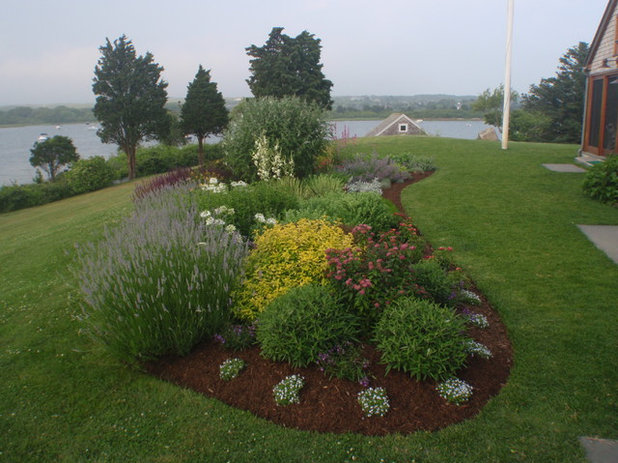
Jennifer Jamgochian / Multiflora
For garden islands, move beyond the familiar circle or oval and design a kidney-shaped layout. The undulating edges will draw your eye farther into the garden.
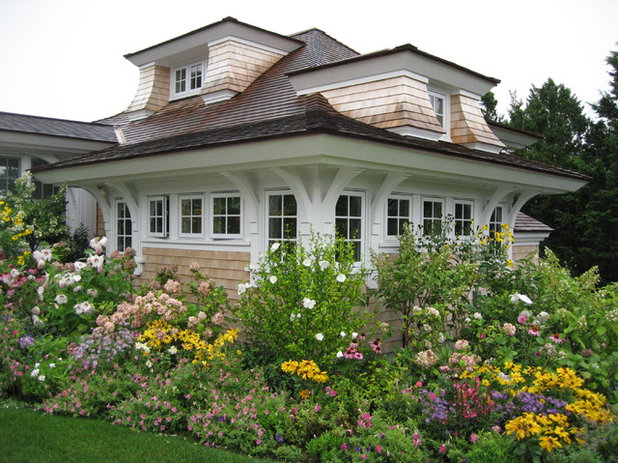
Meyer & Meyer, Inc.
Keep in mind how the bed fits in with your garden and helps highlight the architectural features of your house. Experiment with different shapes using a length of hose or rope until you find what you want.
Whatever shape you choose, go as large as is practical. A small garden bed can feel fussy; with space to expand, the flowers can make more of an impact.
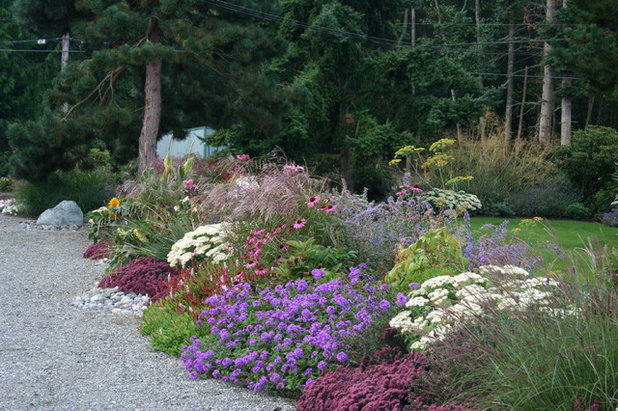
Plantswoman Design
Think about a color scheme. A flower bed filled with every color of the rainbow and then some will look messy unless you have an exceptionally good eye for color. So before you buy plants and seeds, decide on a color scheme. A good rule of thumb is to stick to no more than three main colors and add variety by varying the shades within each color. Not only will your flower bed look more cohesive, but you’ll also be able to narrow down good choices at the garden center that much more quickly.
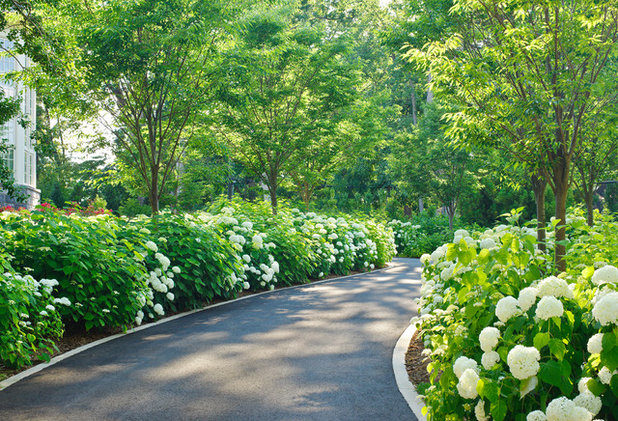
Katia Goffin Gardens
In the garden, greens and whites are the neutrals, though they also can make a stunning statement on their own. A garden in green and white is a cool oasis on a hot summer day.
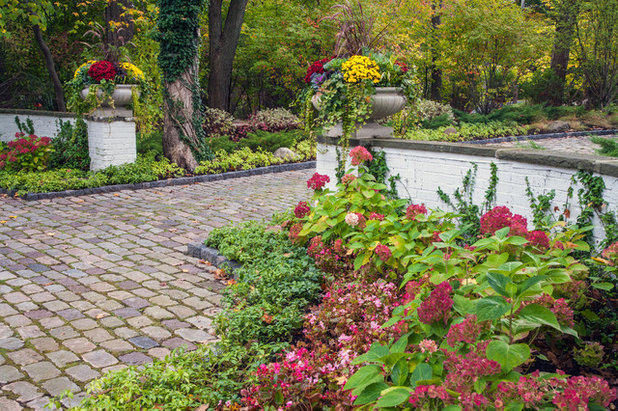
NLH Landscape Architects
A monochromatic color scheme provides an immediate sense of calm and order. Go with a long run of the same plant or experiment with different shades of your chosen color.
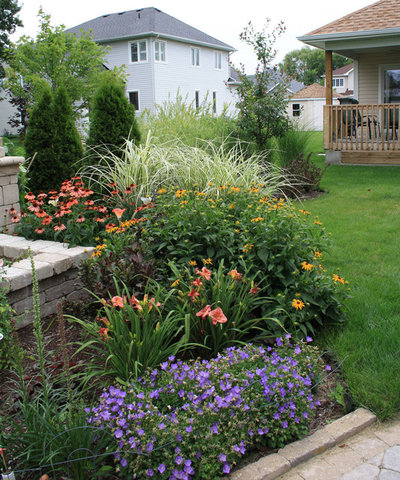
For more drama try a two-color combination. A complementary color scheme, meaning the primary shades are opposite or almost opposite each other on the color wheel (such as the purples and oranges seen here), create a sense of vibrancy. An analogous combination of colors that sit next to each other will give your bed a gradation of shades. Think of it as the ombré look for the garden.
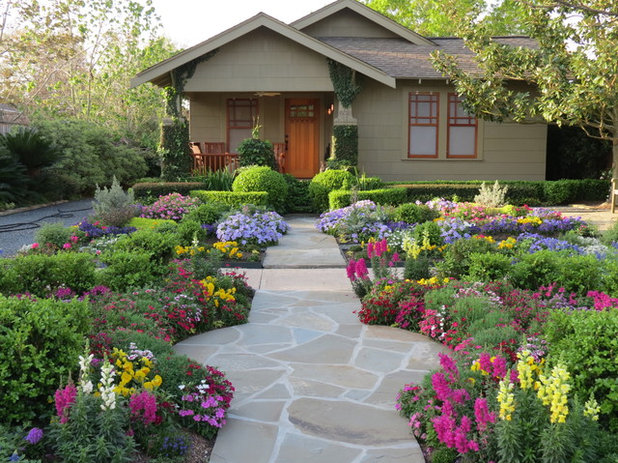
David Morello Garden Enterprises, Inc.
A more complex color approach with three main hues, in this case pink, yellow and purple, can be more of a challenge, but the result will be worth it. You can choose colors that are one-third the full circle’s distance apart on the color wheel, but using colors that aren’t quite directly opposite will create an unexpected twist.
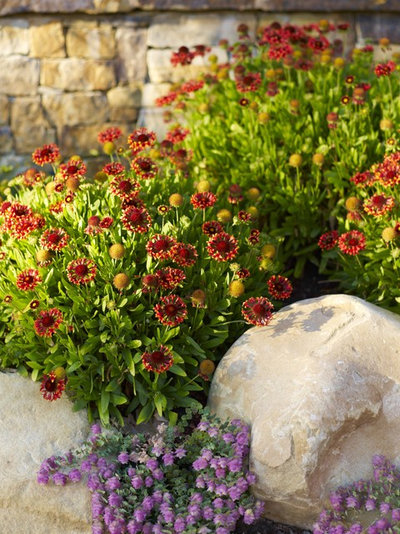
Jeffrey Gordon Smith Landscape Architecture
Warm or cool. Another consideration is warm colors versus cool colors. Reds, yellows and oranges are on the warm side of the color wheel and result in a bright and cheery garden space.
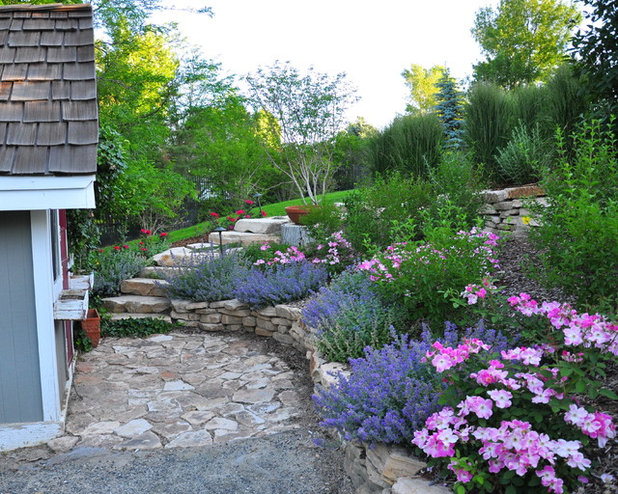
Designscapes Colorado Inc.
The blues, purples and dark greens on the cool side of the color wheel are relaxing and peaceful.
How to use the color wheel
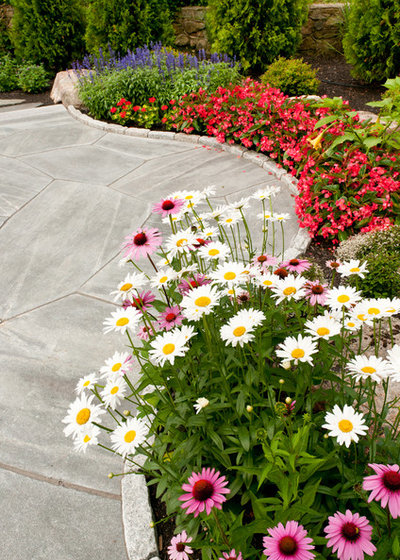 Bright or muted.
Bright or muted. Intensity matters as well. Bright, saturated hues will stand out.
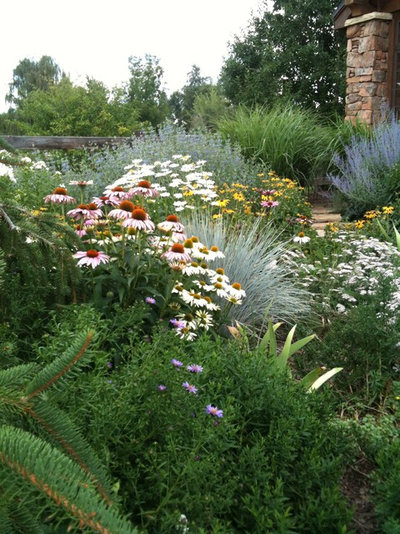
Kingfisher Landscape
More muted colors will do well as a backdrop rather than taking center stage.
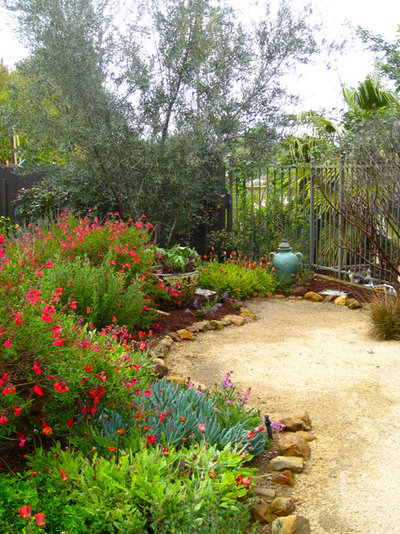
Shirley Bovshow
Choose plants for your region, climate and growing conditions. Once you know the basics — location, overall shape and color — it’s time to choose the actual plants and put them in place.
Start by choosing plants that have the same basic needs for sunlight, water and soil, such as the drought-tolerant sun lovers in this Mediterranean-inspired garden. And consider including plants native to your area. You’ll find them much easier to take care of, and they’ll attract pollinators and other beneficial insects.
Houzz guides to attracting birds and butterflies
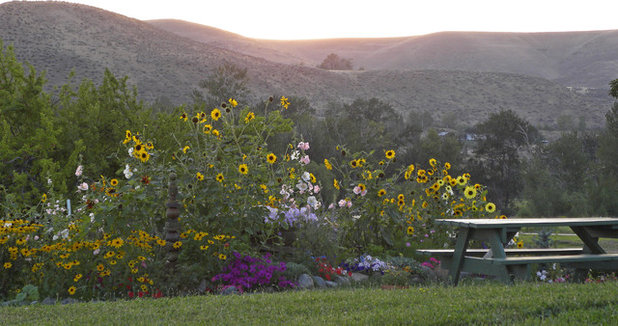
Sarah Greenman
Vary the plant height. A mix of tall and low plants, even if the difference is only a few inches, can make the difference between a garden that is static and a lively one.
Keeping plant height in mind is also important when you plant. Generally, place taller plants at the back or in the middle, with the medium-height ones surrounding them and the shortest lining the edges. That way the shortest plants won’t get lost.
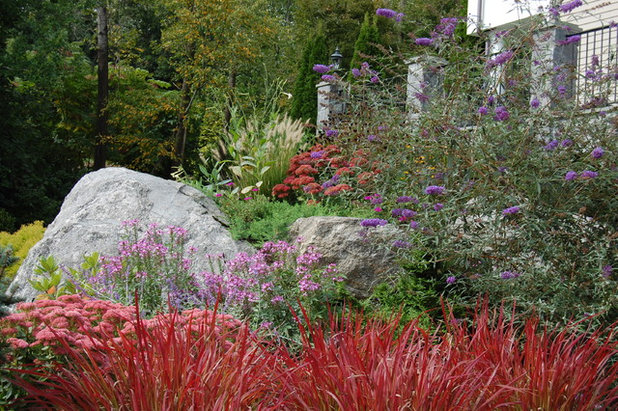
Mary-Liz Campbell Landscape Design
Mix shapes and textures. A garden bed filled with a range of shapes, from upright to gently spreading, will be more interesting than one where all the plants have the same general look.
Texture, too, can add interest. Soft and fluffy plants will play off those that are spikier and stiffer.
Get some planting ideas to try
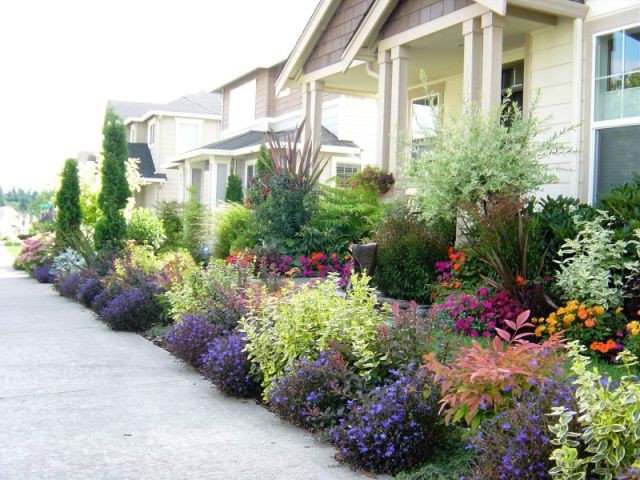
Personal Garden Coach
Plan for repetition. Too many individual plants can be as overwhelming as too many colors. Using the same plant throughout the space creates a sense of rhythm. Chose one to three plants that you can use throughout the flower bed to achieve this effect.
How to design a garden that has rhythm
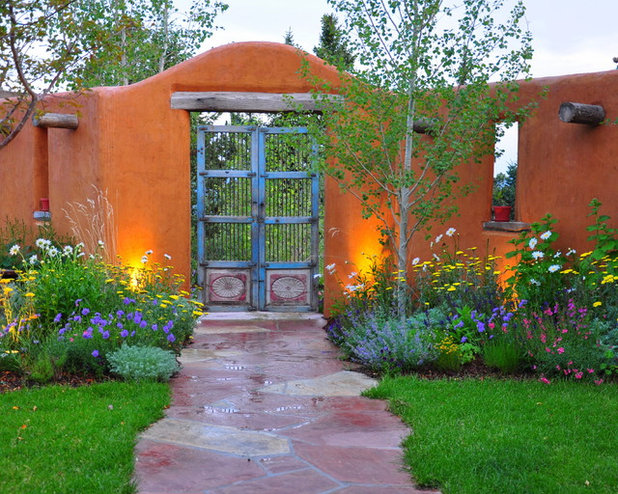
Designscapes Colorado Inc.
Anchor the space. Adding a tall plant at the back of the bed toward the center and two similar or matching plants at each end will help define the shape of the bed and give it some structure. It needn’t be a flowering plant; shrubs, small trees and grasses can also serve this purpose.
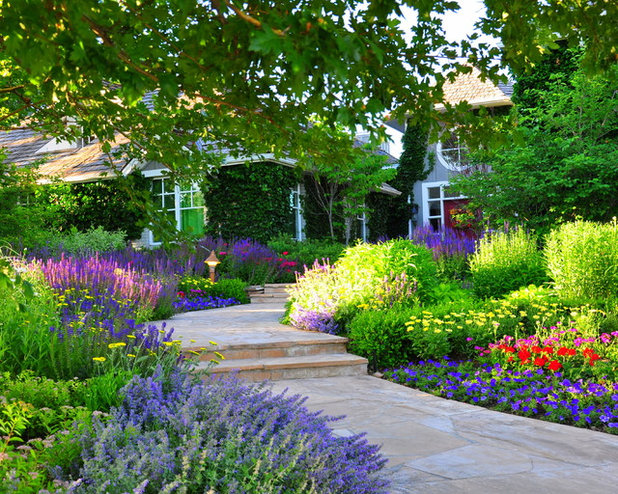
Designscapes Colorado Inc.
Provide some accents. In the garden here, patches of bright green along the walk draw your eye through the cool pinks and purples to the front door of the house. Plant or foliage color is a good way to highlight areas of the bed, but a flower color outside your color theme or an unexpected shrub or tree is also a good choice.
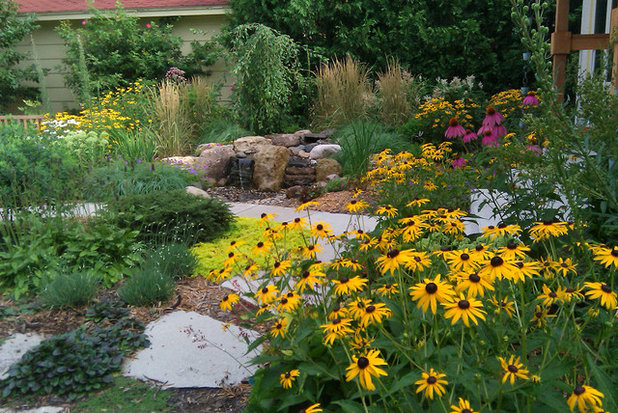
Field Outdoor Spaces
Plant for all seasons — or at least three of them. There are very few plants that bloom prolifically from spring to fall. As you’re choosing plants, especially perennials, look for those with different flowering times and spread them throughout the garden. Bulbs might provide early spring color, then can be protected and hidden while their foliage fades by the taller, summer-blooming perennials they’re planted under.
Don’t forget late-summer and fall color as well. It will keep your garden from looking faded as summer ends.
If you’re not sure what will bloom when, or you do end up with a bare spot, remember that annuals can always fill in. See what’s in bloom at a local nursery, though check before purchasing to be sure they, too, aren’t at the end of their bloom season.
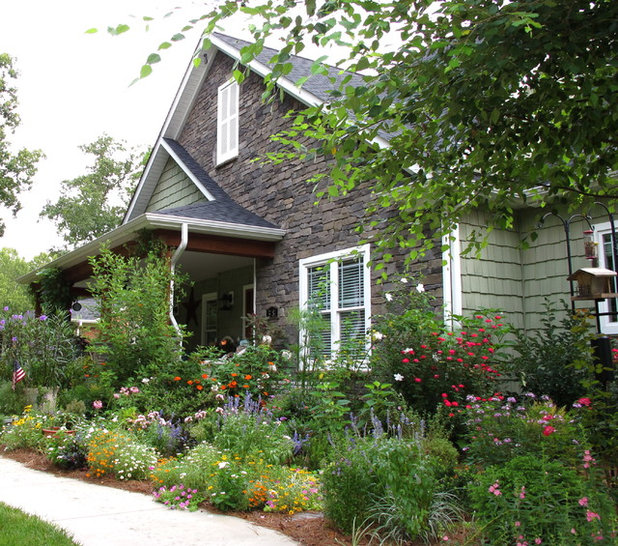 Add an unexpected element.
Add an unexpected element. It could be a burst of orange in a pink and lavender garden or a pop of dark lavender in a gold and red flower bed. You could throw in some vegetables; think of the color and height variations that tomatoes, peppers, eggplants or berries provide. You can even add a garden ornament or two. After all, you wouldn’t want your flower bed to follow all the rules.
Houzz guides to growing fruits and vegetables in your garden
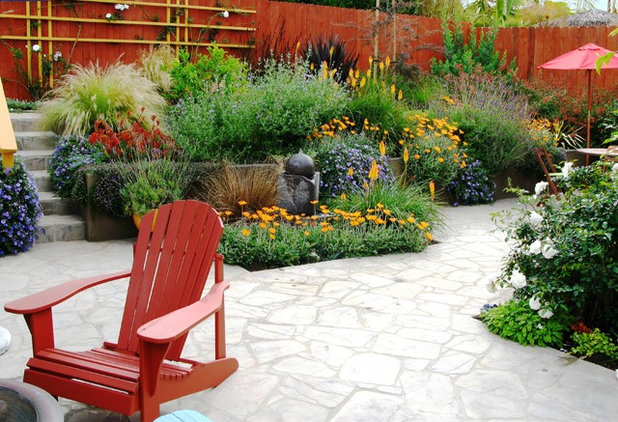
debora carl landscape design
Finally, enjoy! The great thing about gardens is that you can easily make changes. If something isn’t working, you can swap it out or add in something else to hide it — again, something annuals are very good for. If you tire of the colors, you can change them next year.
Tell us: What are you enjoying in your garden this summer?
Explore the Houzz garden guides





